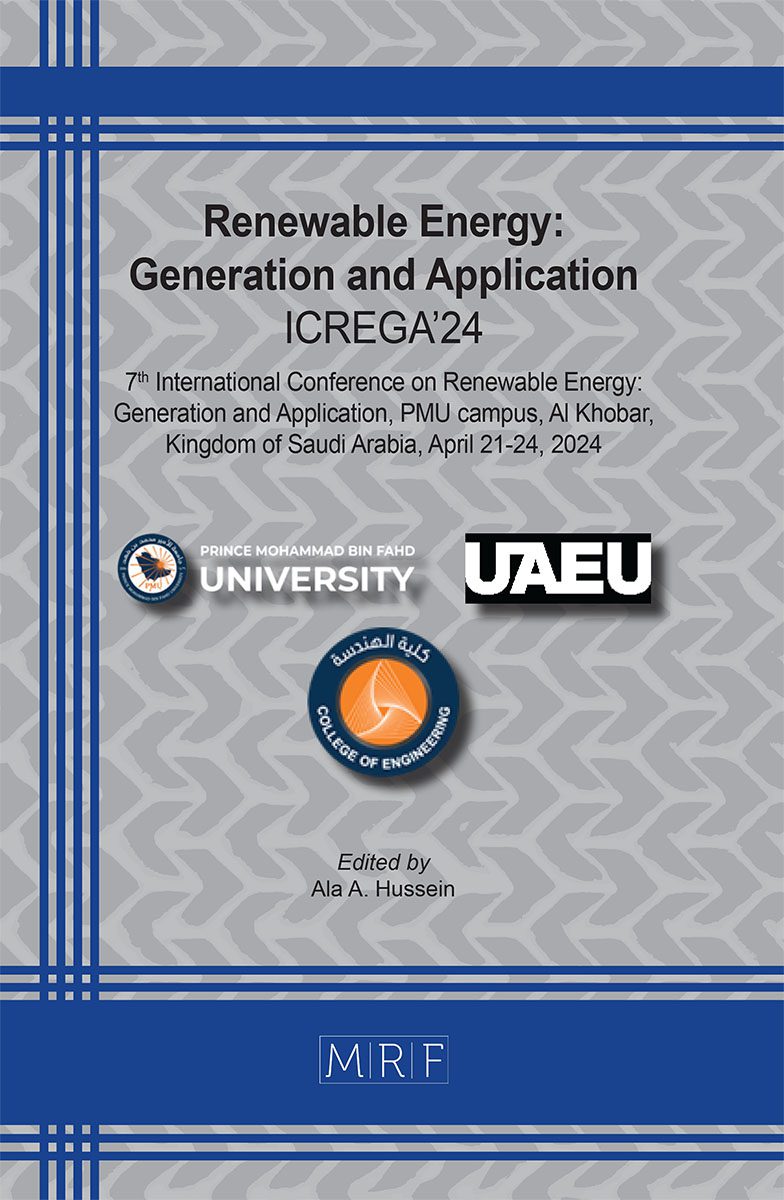–
Impact of artificial intelligence (AI) in Martian architecture (exterior and interior)
Lindita Bande, Jose Berengueres, Aysha Alsheraifi, Anwar Ahmad, Saud Alhammadi, Almaha Alneyadi, Amna Alkaabi, Maitha Altamimi, Yosan Asmelash
download PDFAbstract. Martian architecture has gained interest in the recent year. Several grand architectural studios have designed hypothetical buildings as part of a colony of the red planet. This study is a continuation of a previous research on mars Habitat. The use of AI to generate alternatives of design based on an initial idea gives insight of how technology can assist us in such major projects. The methodology followed in this study is as per the below steps: 1- General Description of the initial concept: Organic Architecture, 2- General Description of the initial concept: Minimal Architecture, 3- Use of AI in the selected projects, tool description, 4- Results: Outcomes of AI Applications. The aim of this study is to investigate the impact of the AI on Space Architecture, more specifically Martian Architecture. The initial step in the methodology is to design a colony that connects together but as also well distributed in the plan. The following step is using an AI tool to generate processed (rendered) images of the base image. These AI renders will then be analyzed and the final implication of the findings for the project will be described. The findings of this study can be relevant to relevant authorities in space exploration and space architecture with the help of AI tools.
Keywords
Martian Architecture, AI Tool, Critical Thinking, RHINO/Grasshopper
Published online 7/15/2024, 8 pages
Copyright © 2024 by the author(s)
Published under license by Materials Research Forum LLC., Millersville PA, USA
Citation: Lindita Bande, Jose Berengueres, Aysha Alsheraifi, Anwar Ahmad, Saud Alhammadi, Almaha Alneyadi, Amna Alkaabi, Maitha Altamimi, Yosan Asmelash, Impact of artificial intelligence (AI) in Martian architecture (exterior and interior), Materials Research Proceedings, Vol. 43, pp 238-245, 2024
DOI: https://doi.org/10.21741/9781644903216-31
The article was published as article 31 of the book Renewable Energy: Generation and Application
![]() Content from this work may be used under the terms of the Creative Commons Attribution 3.0 license. Any further distribution of this work must maintain attribution to the author(s) and the title of the work, journal citation and DOI.
Content from this work may be used under the terms of the Creative Commons Attribution 3.0 license. Any further distribution of this work must maintain attribution to the author(s) and the title of the work, journal citation and DOI.
References
[1] Amini, K., Janabadi, E.D. and Fayaz, R. (2022) ‘Lighting and illumination investigation of long-term residence on Mars for the case of a set of designed martian habitat units (mhus)’, Acta Astronautica, 192, pp. 210–232. https://doi.org/10.1016/j.actaastro.2021.12.021
[2] Amini, K. et al. (2022) ‘Design of a set of habitat units and the corresponding surrounding cluster for long-term scientific missions in the pre-terraforming era on Mars’, Icarus, 385, p. 115119. https://doi.org/10.1016/j.icarus.2022.115119
[3] Valinia, A. et al. (2023) ‘Risk trade-space analysis for Safe Human Expeditions to Mars’, Acta Astronautica, 211, pp. 192–199. https://doi.org/10.1016/j.actaastro.2023.05.039
[4] Wörner, L. et al. (2023) ‘Maquis—concept for a mars quantum gravity mission’, Planetary and Space Science, 239, p. 105800. https://doi.org/10.1016/j.pss.2023.105800
[5] Nasios, I. (2024) ‘Analyze mass spectrometry data with artificial intelligence to assist the understanding of past habitability of Mars and provide insights for future missions’, Icarus, 408, p. 115824. https://doi.org/10.1016/j.icarus.2023.115824
[6] Hsu, C.-Y., Li, W. and Wang, S. (2021) ‘Knowledge-driven geoai: Integrating spatial knowledge into multi-scale deep learning for Mars Crater Detection’, Remote Sensing, 13(11), p. 2116. https://doi.org/10.3390/rs13112116
[7] Radanliev, P. et al. (2020) ‘Design of a dynamic and self-adapting system, sup-ported with Artificial Intelligence, machine learning and real-time intelligence for predictive cyber risk analytics in extreme environments – cyber risk in the colonization of Mars’, Safety in Extreme Environments, 2(3), pp. 219–230. https://doi.org/10.1007/s42797-021-00025-1
[8] Yan, R. and Wu, W. (2021) ‘Empowering conversational AI is a trip to Mars: Progress and future of open domain human-computer dialogues’, Proceedings of the AAAI Conference on Artificial Intelligence, 35(17), pp. 15078–15086. https://doi.org/10.1609/aaai.v35i17.17771
[9] Szocik, K. (2019) ‘Should and could humans go to Mars? yes, but not now and not in the near future’, Futures, 105, pp. 54–66. https://doi.org/10.1016/j.futures.2018.08.004
[10] Konya, A. and Nematzadeh, P. (2024) ‘Recent applications of AI to Environmental Disciplines: A Review’, Science of The Total Environment, 906, p. 167705. https://doi.org/10.1016/j.scitotenv.2023.167705












